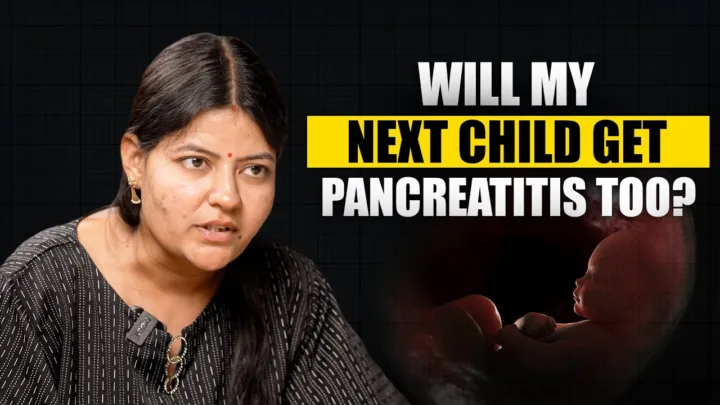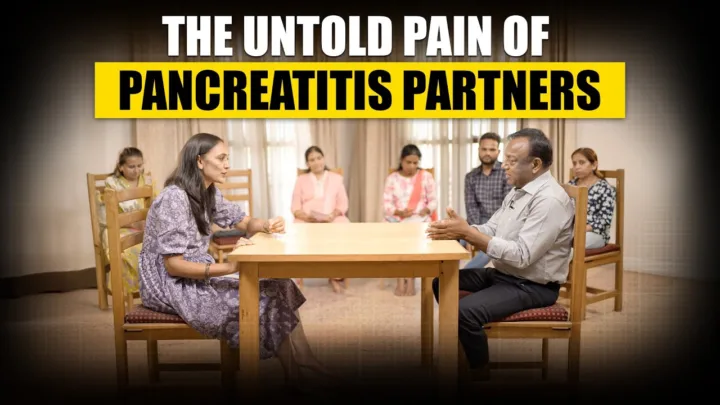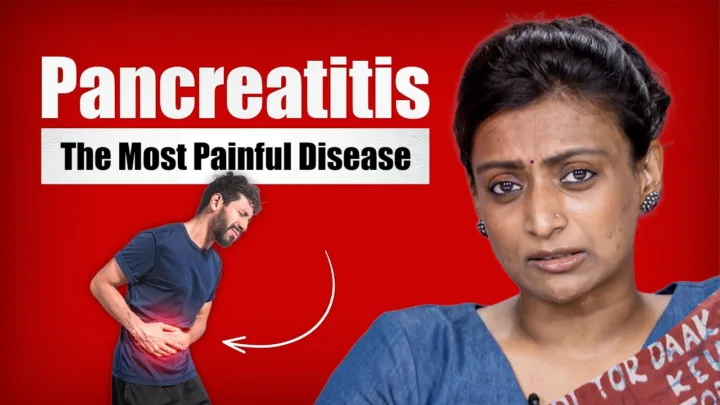A candid patient interaction session with Vaidya Balendu Prakash
This session captures the immense emotional and clinical challenges faced by young patients battling Pancreatitis, highlighting the need for mental fortitude, strict discipline, and a specialized medical approach that goes beyond conventional enzyme replacement.
Part 1: The Scars of Late Diagnosis and Despair
Young patients shared heartbreaking stories of misdiagnosis and financial strain, underscoring the severity of the disease’s trajectory:
-
Ritesh Gupta (27): Recounted his painful journey of initial dismissal by a doctor who thought he was faking pain to avoid school. Later diagnoses were slow (“swelling” before “pancreatitis”). By 2023, the financial burden, social isolation, and diagnosis of Type 3c Diabetes led to suicidal thoughts. He described the hopelessness of taking costly Creon that failed to manage digestion, only to find relief without Creon at Padaav.
-
The Emotional Cost: The financial ruin and loss of friend circles (social isolation) were often as debilitating as the physical pain, leaving patients emotionally broken and searching for hope.
Part 2: Addressing the Future: Genetics, Sexual Health, and Anxiety
The interaction focused heavily on anxieties about the future, which Vaidya Prakash addressed with a blend of clinical realism and philosophical stability:
-
Genetic Risk & Marriage (Sumit, 22): Sumit feared passing the disease to his children. Vaidya Prakash’s key message was to “Stop running the mind’s mill” with future worries. He emphasized that the immediate treatment requires total mental rest (Vishram). He calmly noted that only about 5% of cases are genetic, urging the patient to focus on stability now.
-
Sexual Health: When asked if Pancreatitis and Diabetes affect sexual life, Vaidya Prakash confirmed the general link between Diabetes and impotence, but stated that recovery starts with eliminating fear and stabilizing the mind and body.
-
Accepting Damage: When patients presented severe clinical data (Fecal Elastase at 11.3 and HbA1c at 7.3), Vaidya Prakash was realistic: significant reversal of already destroyed tissue is unlikely. However, the goal is successful functional management allowing them to digest normal food (butter, cream, oil) and prevent further progression.
Part 3: The Breakthrough of Discipline and Specialized Care
The core of the Padaav protocol, Vaidya Prakash explained, is built on simple, non-negotiable pillars that reverse the disease’s progression:
-
The Power of Amar Medicine: He confirmed that the specialized protocol allows patients to function without synthetic enzymes (Creon), even with severe Exocrine Deficiency. The medicine focuses on stabilizing the body’s ability to process food.
-
The Lifestyle Correction: The discipline—eating on time, resting, and following the diet—is paramount. He noted that high sugar levels in many patients normalize during the 21-day stay simply because they adhere to this non-negotiable routine.
-
Addressing Sludge and Stents:
-
Gallbladder Sludge: He diagnosed sludge not as an isolated problem, but as a consequence of long meal gaps and poor breakfast habits. The simple Ayurvedic solution recommended: 10 ml of warm cow’s ghee first thing in the morning to force gallbladder contraction.
-
Stents: He advised against unnecessary surgical interventions like stenting, calling them temporary solutions that do not halt the underlying disease progression.
-
Part 4: Final Guidance: True Wealth is Health
Vaidya Prakash concluded with advice to the working patients, urging them to prioritize their survival over professional ambition:
-
Accepting Limits: He advised patients (like Sumit Rai, 40) that their bodies are no longer “new model cars.” They must stop the aggressive travel pace of their youth.
-
The Ultimate Rule: “Sarvam Parityaj Shariram Anupalay” (Abandon everything and protect the body). True wealth is not accumulated by exhausting the body; it is maintained through discipline.
-
The Mission: His mission, inherited from his father, is to practice “Bhay Harati Iti Bheshaja” the true work of the healer is to remove fear, offering hope where conventional medicine often offers only progression.






